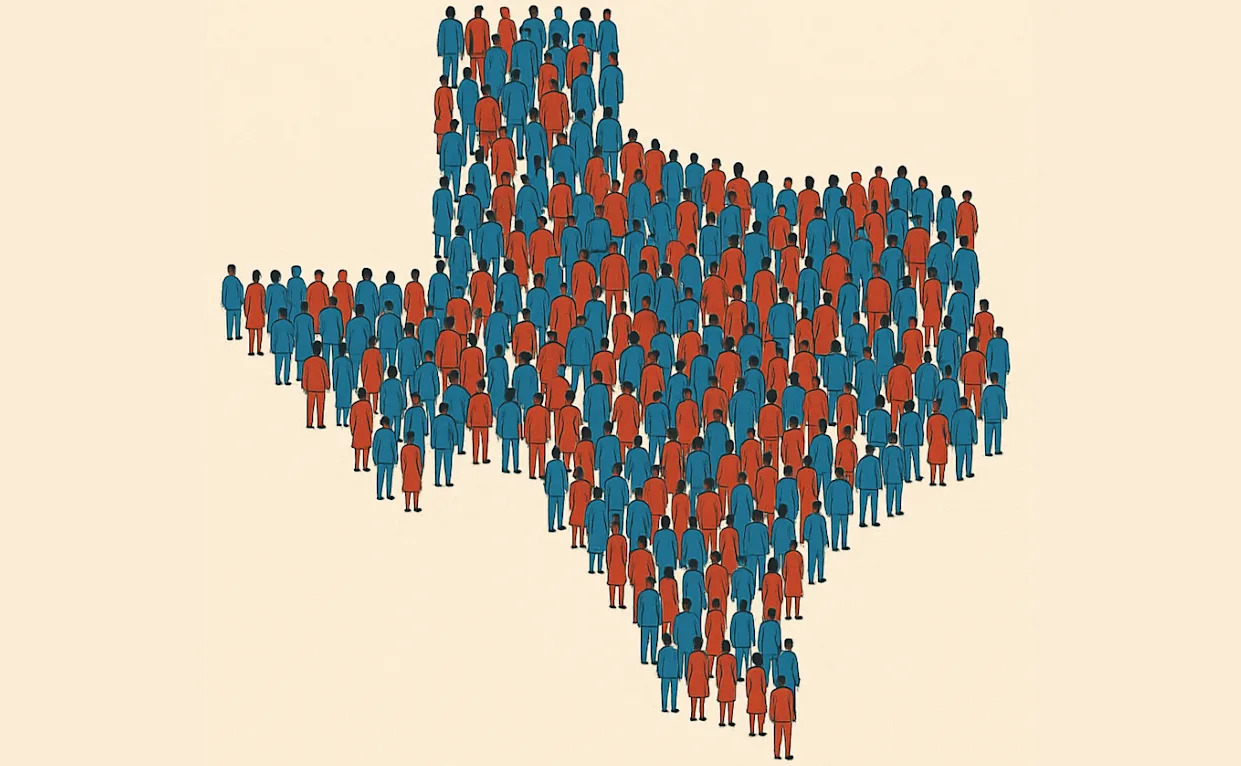
As Texas lawmakers move to redraw the state’s congressional map ahead of the 2026 midterms, the effort is getting attention far beyond the state’s borders.
The mid-cycle push — an uncommon move, led by Republicans — could help the GOP gain ground in one of the nation’s most closely watched political battlegrounds. But it’s already sparking backlash: More than 50 Democratic lawmakers walked out of the Texas House on Sunday to block a vote on the proposal, drawing national headlines and intensifying the standoff.
Critics warn the plan amounts to political overreach, and it’s already prompted responses from leaders in other states, including legislation aimed at limiting partisan gerrymandering.
But the outcome could affect more than just Texas. It may help shape the balance of power in Congress. Here’s what you need to know.
What’s in the new Texas map?
Republicans are eyeing five Democratic-held districts for takeover under the new congressional map, which zeroes in on incumbents like Reps. Henry Cuellar and Vicente Gonzalez. The proposal overhauls urban and minority-heavy districts in Austin, Dallas, Houston, and across South Texas.
The GOP currently holds 25 of Texas’s 38 congressional seats, but the proposal could push that number to 30 — all in districts Trump carried by double digits in 2024, making them especially tough for Democrats to reclaim.
“The only rationale for this move is political survival,” Democratic strategist David Carlucci tells us.
Why are Texas Republicans doing this now?
The timing is no accident: While mid-decade redistricting is unusual, it’s entirely legal — and with control of the U.S. House likely to come down to just a few seats in 2026, even a small shift in Texas could give Republicans a decisive edge.
“This goes far beyond a simple vote in the Texas legislature,” Dallas-based strategist John Thomas tells us. “With the U.S. House majority so narrowly divided, just a few seats could make all the difference — not just in determining control, but in the GOP’s ability to pass key legislation.”
Trump has openly endorsed the effort, framing it as a necessary step to maintain GOP power. “We are entitled to five more seats in Texas,” he told CNBC’s Squawk Box — a reflection of how national Republicans view the redistricting push as both strategic and warranted based on recent electoral trends.
Republicans have echoed that argument, portraying the new map as a more accurate reflection of population changes and evolving voter behavior — particularly among Latinos. Four of the five potential GOP pickups have Hispanic majorities, according to state demographic data, and strategists say those communities are increasingly leaning Republican.
“Republicans are leaning into Latinos as a key part of their voting coalition,” Thomas says. “They’re confident not only in their current performance with Latino voters, but also in their ability to keep growing support within that community. It’s an acknowledgment of shifting demographics they believe are trending Republican — not just this cycle, but over the long term. That marks a sharp reversal from just a few years ago, when many political observers believed Democrats would dominate as the Latino population grew. That assumption no longer holds.”
How are national Democrats pushing back?
Democratic National Committee Chair Ken Martin said on Sunday that Democrats are “absolutely” well-positioned to fight back against Republican redistricting efforts.
“We’re going to fight fire with fire,” Martin told NewsNation. “If Texas wants a showdown, which they clearly do, we’re going to give them the showdown.”
Carlucci, the Democratic strategist we spoke with, echoed a similar sentiment.
“What we’re seeing is a blatant and unprecedented power grab by President Trump — using his influence to pressure a state into redrawing congressional lines mid-cycle, purely for political advantage,” Carlucci tells us. “It’s a desperate attempt to cling to power and hold onto control of the House. Frankly, I think it shows the president and the GOP know their time is running out — especially with things like the latest jobs report and this increasingly erratic trade war.”
Texas’s aggressive move could even spark a broader national shift. Governors like California’s Gavin Newsom and New York’s Kathy Hochul have already threatened to retaliate by pursuing their own redistricting plans — ones that could eliminate GOP-held swing districts in their states.
And it’s not just Democrats speaking out. A handful of Republicans from competitive districts are also pushing back against their party’s efforts in Texas. California Rep. Kevin Kiley and New York Rep. Mike Lawler have both called for nationwide limits on partisan gerrymandering — a rare break from a party that has long resisted such reforms.
On Tuesday, Kiley introduced legislation that would block any new congressional maps adopted before the 2030 census, including those currently under consideration. His office said the bill is aimed at stopping the Texas redraw and preventing similar efforts in states like California.
But Carlucci warns that redistricting battles in both red and blue states could undermine trust in free and fair elections.
“It’s setting up a race to the bottom,” he says. “What we should be striving for are fair, balanced maps — not partisan power grabs.”
The post What the Texas Redistricting Fight Could Mean for the Midterms appeared first on Katie Couric Media.








Comments